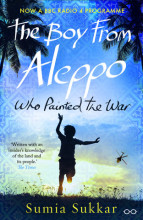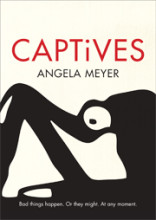Brenda Saunders reviews “Yimbama” by Ken Canning
by Ken Canning
ISBN 978-1-922181-43-5
Reviewed by BRENDA SAUNDERS
The poetry in this collection covers the full range of social and cultural conditions facing Aboriginal people today. Burraga Gutya writes of imprisonment, mental illness, domestic violence, dislocation and the injustice due to racism or ignorance. On the back cover notes to this collection, the poet explains that “some of the poems reflect my feelings of political treachery, oppression and the mental state this leaves.”… “It is important to note that while I am writing my own experiences, I am [also] writing about the First Nations People’s survival against some horrific experiences”.
These “experiences” were also the driving force behind the work of well-known Aboriginal poets from the past such as Jack Davis, Kevin Gilbert and Oodgeroo Noonuccal. From time to time racism still rears its head in Australian sport, politics and public debate. This is the theme of many poems in this collection such as ‘Name Game’ the first poem. Here the poet sees racism and discrimination all around him.
You call me racist names
You call me not quite right
You call me law breaker
You call me a social disturbance
You call me a low form of life
… (9)
Repetition of word and line is used for emphasis and dramatic effect. As a political activist Canning employs the chanting style reminiscent of a street march. And again in ‘Visibility Zero’, the cry is for equality and recognition.
George street
Sydney
Any big street
any big town.’
…
I am invisible
the visible invisible
I am black
… (10)
In these poems, anger and defiance lie close to the surface. The voice is powerful and defiant, the style punchy and direct, with the immediacy of a ‘rap’ performance, a style now popular with Indigenous writers. Throughout this collection the line breaks are uneven, the lines short.
Gutya employs rhyme and half rhyme to great effect in many of these poems, for example in ‘Black Diggers’ he demands recognition and ‘visibility’ for Aboriginal ex-servicemen.
…
the strong Black Diggers
stood tall and proud
and gave honour
to all Peoples
of this land
…
some came home
to be shunned
once more
The country
you fought for,
turned its back
cowardly back
on you
the brave Black Digger.
… (56)
‘Mother Tongue’ is a lament for the loss of his native Kunja language, which for him has the power to expresses deep spiritual connections to Country and the inner emotions of his people. The short line construction slows down each word and thought. We have time to pause and reflect.
…
The english language
cannot capture
my inner being,
…
I yearn to tell
to teach
the oppressor
the richness
of my world
my sacred country
…
I try forgiveness
of mindless acts,
but every time I speak
you pierce my heart
as the words you left
are without meaning,
…(60)
The poems related in Aboriginal ‘lingo’ are some of the best in this collection. They display a humorous insight and a first person immediacy often lacking in many of the other more political poems. In ‘Old Clever Woman’, a woman recounts her journey by bus and her encounter with white people, perhaps tourists, taking photos. Here the story is told in a singular, consistent voice revealing the gulf, the ignorance and misunderstanding that sometimes exists between the two cultures.
…
click ― click alla same.
This lot take picture
put ‘em in big book.
Tell em world they good,
they just love blackfella.
click ―click― same one,
gun― camera no matter.
… (30)
And later we hear a cry for country, see the differing attitudes in ‘Tree Talk’, as the Old People confront the Conservationists and have the last word.
…
Old one Tree been talkin’
long time speak.
Them ones deaf for Tree talk
they hear only creak.
Old one Tree been screamin’
NO CHOP ― NO CUT.
Silly buggers talk wrong way
TALK TALK — CHATTER CHATTER
…
Old one Tree been talkin’
long before greenie time.
Old one Tree knows,
this one watch long time.
…(70)
Gutya calls for understanding from the big developers and miners and speaks of the need to conserve his ‘sacred country’. Its value and importance to Aboriginal communities is stressed in ‘The Mother of Love’
…
why do they not live
in your reflection,
witness your perfection.
Why they can only see
everything you are
all that’s sacred
only in a dollar way.
… (72)
Individual survival and resilience too is encouraged. In ‘Paths’ he calls to his fellow Aborigines to have confidence, to learn from the wisdom of the Dreaming stories.
…
Be aware
for you are born,
with your own special ways
Explore your own purpose
do not fear the unknown,
listen to those born
before time.
… (68)
In a series of poems, the poet confronts his own inner demons. These have titles such as “Relapse”, “Isolation”, “Psychotic Serenade” and” Rapid Demise”. They speak to Gutya’s battle with mental illness, his fear and sense of deprivation whilst in prison.
The short line breaks and the repetition of sound and word maintain an effective jagged rhythm. In ‘Rapid Demise’, alliteration and half rhymes add to the distress and urgency.
…
Renewed visions
reviewed perceptions
beating, beating, beating,
clotted.
Irrational reason
chases its prey
closing down of patterns
Remember, think, respond
the sheltered shock
… (15)
Reliving these episodes, he relates his struggles with intense clarity. The poem ‘Psychotic Serenade’ (20) speaks of the “bleakness in rhapsody/ misery in D minor/ singing the madness — ”. He tries to understand the disturbing visions he encounters: looks for reason in confusion. Relief only comes as ‘the soothers sooth/ comfort. / the seers see revelations, / Corrections of reflection (‘Relapse’ 36).
As the poet explains in the back cover notes, he was “fortunate” to “write some of these poems while he was ill” but “a gentleness survives and overcomes the bitterness”. There is a cry for understanding and acceptance and a more playful word pattern in ‘We Said’
You said, I said, you said
that I should, you should — I
You did, I did, you did,
we both didn’t
LISTEN
To what
You said. I said, you said.
We both said instead,
…
Neither of us did,
understand —
… (92)
and in ‘Reflect’ there is a gentler voice welcoming the reader to join as one in accepting Aboriginal culture.
You must first learn
to walk the path
of those tracks
commenced at the dawning.
Planned by spirit ones
in the Dreaming.
…
maybe just maybe
you will find answers
To live in a way
of harmony, to survive
the mistakes of the past.
… (93)
“Sharing” is the last poem in this collection and in these lines the poet offers the hand of reconciliation. He invites us to go with him on a “journey of soul /carried by wind spirit” for “tranquility — /to exist in my place”.
This collection reflects the writer’s convictions and his awareness that the political struggle goes on. Many of the poems speak of the anger and frustration felt by many Aboriginal people deprived of a voice. In the final poems the poet offers the hand of reconciliation, asking the reader to listen and learn the great lessons of Aboriginal culture.
BRENDA SAUNDERS is a Sydney writer and artist of Wiradjuri and British descent. She has published three collections of poetry her work has been published on the web and in literary journals here and overseas and she has read her poetry on Awaye and Poetica ABCRN. Brenda was short-listed for the David Unaipon Prize in the Queensland Premier’s Literary Awards 2011 and she was awarded the Varuna Dorothy Hewitt Poetry Fellowship for 2012. Her most poetry collection The Sound of Red was published by Hybrid in 2013. She recently returned from a Resident Fellowship at CAMAC Arts Centre in France where she worked translating her poetry into French.









